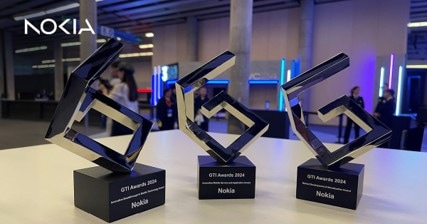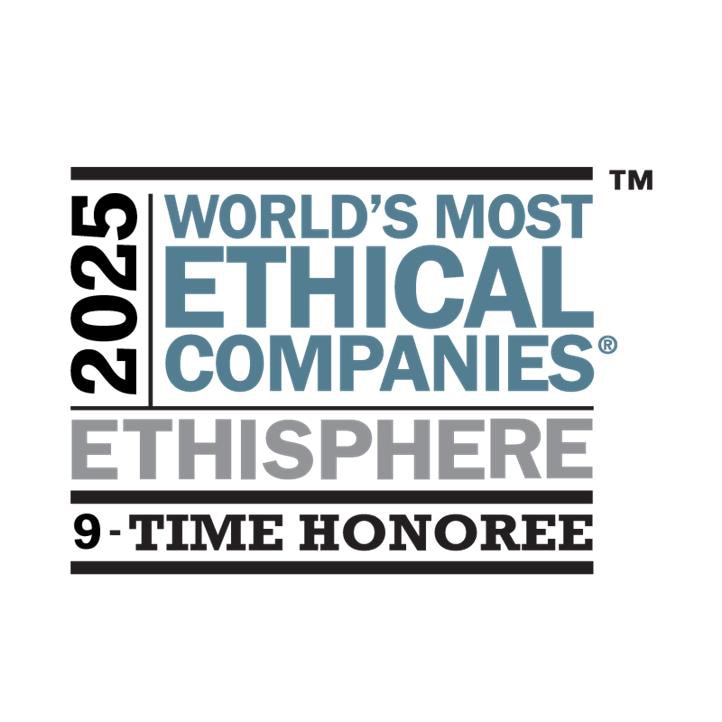Advancing connectivity to
secure a brighter world
Nokia is a global leader in connectivity for the AI era, providing the critical network infrastructure the world relies on.
Every day, we’re powering our customers with advanced connectivity across fixed, mobile and transport networks, delivering the performance and security they need to meet the demands of an AI-enabled future.
160
years in business
150+
countries served with Nokia connectivity
4.5bn
mobile subscriptions supported by Nokia networks
€150bn+
invested in advancing connectivity since 2000
20,000+
connectivity patent families
10
Nobel Prizes for breakthrough innovations
Powering our customers
with advanced connectivity



Telecommunication providers
Stay ahead in the AI supercycle.

Mission critical enterprises
Operate securely with high-performance connectivity.

AI and cloud providers
Scale faster with advanced optical and IP connectivity.

Technology licensees
Adopt cutting-edge technologies.
Advancing connectivity,
one invention at a time


For 160 years, we’ve responded and adapted to the needs of an ever-changing world.
2010s

2020
Network on the Moon
Began creating the first network on the Moon.

2014
Massive MIMO
We develop the concept of the Massive MIMO, which is now a foundational technology in 5G with great improvements in efficiency.

2010
Self Organizing Networks
We create Self Organizing Networks that can automatically make adjustments to optimize and adapt to changes in the system.
2000s
1990s
1980s
1970s
1960s
1950s
1940s
1930s
1920s

2020
Network on the Moon
Began creating the first network on the Moon.

2014
Massive MIMO
We develop the concept of the Massive MIMO, which is now a foundational technology in 5G with great improvements in efficiency.

2010
Self Organizing Networks
We create Self Organizing Networks that can automatically make adjustments to optimize and adapt to changes in the system.

2009
Photonic Integrated Circuits
We create Photonic Integrated Circuits, which enable reductions in power consumption, size and cost for optical networking equipment.

2006
Softrouter
We develop the Softrouter, which allows easier deployment and scaling of new services using exposed network capabilities.

2001
MIMO
We invent MIMO - which allows for greater throughput without increasing power or bandwidth requirements.

1992
NZDF Optic Fiber
We invent a new type of optical fiber, Non-Zero Dispersion Fiber (NZDF), that becomes widely deployed in intercontinental and long-haul terrestrial networks.

1991
Microlaser
Bell Labs researchers build and operate the world’s smallest semiconductor lasers - ‘microlasers’.

1991
GSM call
The world’s first Global System for Mobile Communications (GSM) call is made using Nokia equipment.

1989
Neural Networks
At Bell Labs, Yann LeCun and Larry Jackel develop Convolutional Neural Networks, a class of deep, feed-forward artificial neural networks.

1988
Solitons World Record
We break records by sending unique light pulses, called solitons, through 4,000km of optical fiber, without electronic regeneration.

1983
C++ Language
We advance Dennis Ritchie’s original C programming language to become C++ Language - a flexible programming language for large-scale data processing systems.

1978
Cellular Phone System
Two-thousand customers participate in the first public trial of a cellular phone system designed and developed by Bell Labs.

1977
Connecting Chicago
The first Bell System optical telephone communication system is installed under the streets of Chicago, each fibre pair carries the equivalent of 672 voice channels.

1972
C Language
Bell Labs’ Dennis Ritchie develops C Language, arguably the most widely used programming language of all time, allowing for the coding of applications.

1968
UNIX OS Software
We develop UNIX OS - a simple but elegant time-share software system for minicomputers, which can be found in most of the world's internet services and cell phones.

1965
The Big Bang Theory
Our scientists confirm the Big Bang.

1962
Telstar 1
Bell Labs and NASA launch Telstar I - the world’s first active orbiting communications satellite to connect the globe through live transmission.

1958
Lasers
We invent lasers - which revolutionizes not only the communications industry, but also many other global processes.

1954
Solar Battery
We create the the Bell solar battery, the first successful device to convert the sun's energy into substantial amounts of electricity.

1950
Birth of AI
Renowned Bell Lab’s researcher, Claude Shannon, creates a pioneering prototypical AI device (a robotic mouse named Theseus) that can self-navigate a maze through automated switching.

1948
Information Theory
Claude Shannon develops Information Theory at Bell Labs, which lays the groundwork for all digital communications going forward.

1947
Transistor
We invent the transistor - developed as a replacement for vacuum tubes, the tiny device later revolutionizes the entire electronics industry.

1946
Mobile Telephone
The first commercial mobile telephone service, developed by Bell Labs, launches.

1939
Ion discoveries
Bell Labs’ Russell Ohl makes significant ion discoveries that ultimately lead to the development of the transistor and the solar cell.

1939
Digital Computer
George Stibitz of Bell Labs produces the first Binary Digital Computer, which can be operated from a distance over a telegraph circuit.

1933
Origin of the Universe
Karl Janksy, a radio engineer at Bell Labs, discovers the origin of the universe through his radio waves research.

1927
Birth of Television
Our research enables the first long-distance television transmission in the US.

1925
Movies with sound
We develop high-fidelity electrical sound recording, and our equipment is used to create the first full-length motion picture with synchronized sound.

1925
Creation of Bell Telephone Laboratories
Bell Telephone Laboratories (now Nokia Bell Labs) is born from Alexander Graham Bell’s team of engineers and scientists, beginning a legacy of innovation that we carry on today.
Transforming the
future of connectivity
and beyond








